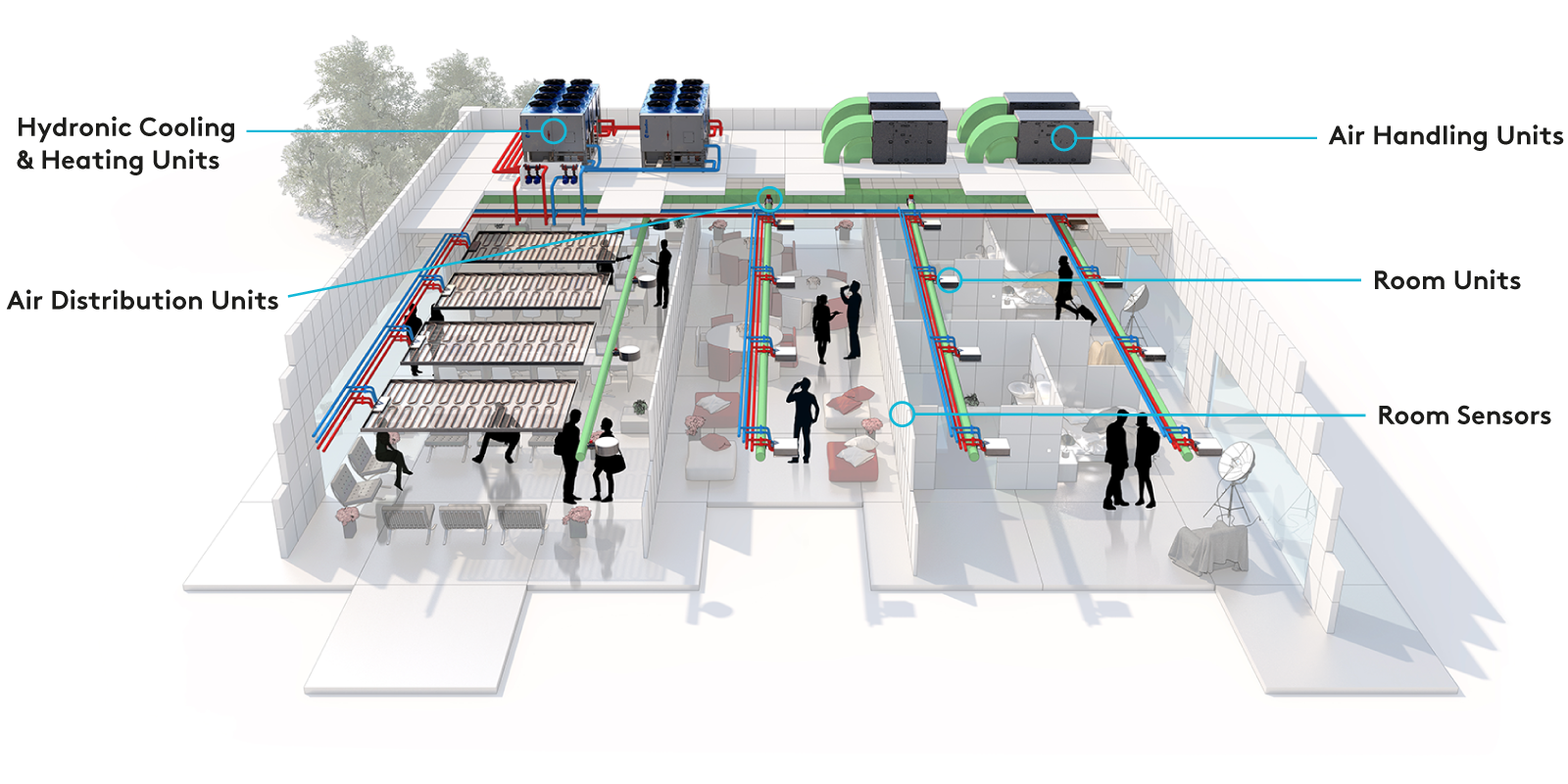The quest for energy savings has had a big impact on the industry. Compared to the last exhibition, when gas boilers were still in high demand, the focus within the heating sector has now shifted dramatically to heat pumps – which are omnipresent and in high demand with the visitors. There is also a lot of focus on the HVAC controls on a system level, once again with crowds at the exhibition trying to take in all the latest technological advances. It is increasingly clear that there are huge savings to be made by making all parts of the system work in a harmonised and seamless way, eliminating waste, but the question is how to do it.
Challenges going forward
On top of this, there are two other themes that strike me, while walking the exhibition floors:
- The issues are attacked one-by-one, following company and trade borders. Most stakeholders are still focusing on their respective parts, heat pump manufacturers focusing on the COP of their units, or system integration experts fine tuning their algorithms or interfaces. But there is still a lack of overview and solutions taking all the necessary parts into consideration. Often, you still need to talk to many different suppliers to create a well-working system and you need to create your own solutions out of many small puzzle pieces.
- There is also a clear risk of tunnel vision regarding the energy aspect, losing sight of other important factors. The scenario reminds me of the situation exactly 50 years ago, in 1973, when a war triggered a sharp increase in energy prices which led to hasty measures to save energy. In my native Sweden, many buildings were hurriedly insulated to minimise heat loss. But within a few years problems started to occur as the previously leaky buildings had become air tight. Without proper ventilation added, there was now an explosion of mold issues, with serious health concerns and costly renovations in its wake. Here we are 50 years later, in 2023, and we must not fall in the same, or similar, trap. There is a clear risk that we take the short-cut, stare blindly at one spot, and try to save energy by sacrificing the indoor climate. During the recent pandemic, there was a surge in interest for indoor climate topics as we realised its importance for our health and well-being, and the indoor environmental aspects were put in the spotlight. However, with the pandemic being followed by an energy crisis, the focus has shifted fast and the ISH is a good example of this with the indoor climate suddenly being pushed somewhat out of sight.
What is the purpose of the building?
My reflections on this, is that even though energy savings are our top priority at the moment, we as HVAC professionals need to keep a balanced view and try to think in wider terms of sustainability. Energy will for sure be an important part of a sustainable building, but we risk losing sight of the primary purpose of the buildings in which we spend our time in – to provide healthy and productive indoor environments for people today and tomorrow. We need to have all three aspects of sustainability in mind – people, planet and profit. We need to create buildings that provide healthy and comfortable environments for the people inside, that economise with assets of our planet, and that are doing so in a way that not only shows on the energy bill, but also put the spotlight on the fact that there is huge long-term potential here - profitability and productivity are very closely linked.

Solutions already available
Of course, one might claim that this is all easier said than done. But if we look carefully at the solutions presented on the ISH fair, the toolbox is actually already available to both reduce the HVAC system’s carbon footprint, and improve the indoor climate. By taking advantage of the last years’ advances in digitalisation, we actually do not have to choose any more, we can have both. As an example, in the Swegon stand, our air handling units, chillers and heat pumps, are all more energy efficient than ever before. But we also have the entire toolbox needed to maintain a good indoor climate in the room. And – crucially – on a higher level, we have the digital services to make sure the system as a whole is working as efficiently as possible, cutting away waste (and time), while maintaining a great indoor climate for satisfied tenants that are happy to stay.
In short – 2023 is not 1973, we have come a long way both in terms of knowledge and technological advances, but when the situation is critical, it’s easy to lose sight of the bigger picture. So let’s help each other out, reminding ourselves to balance the important measures for energy efficiency with the essential needs of the people inside the buildings.

























.jpg?width=75&name=Image%20(5).jpg)








.jpg?width=75&name=magnus%20andersson_550x550%20(1).jpg)











.jpg?width=75&name=0%20(1).jpg)





-4.png?width=75&name=MicrosoftTeams-image%20(3)-4.png)















